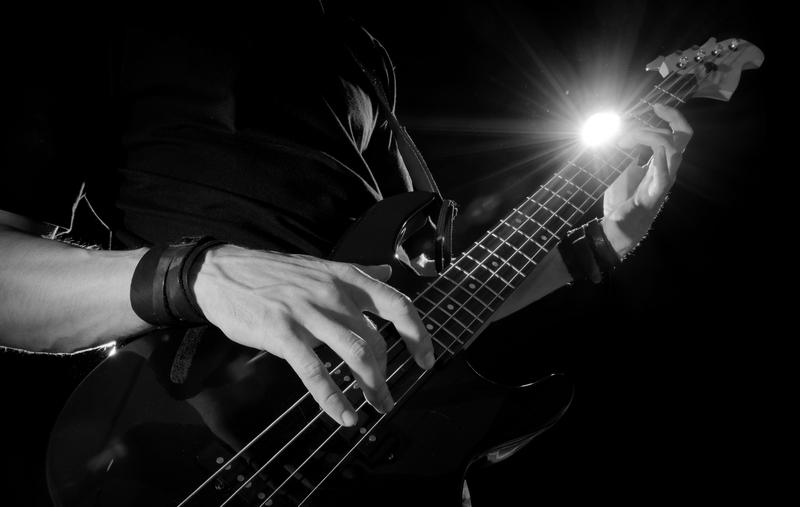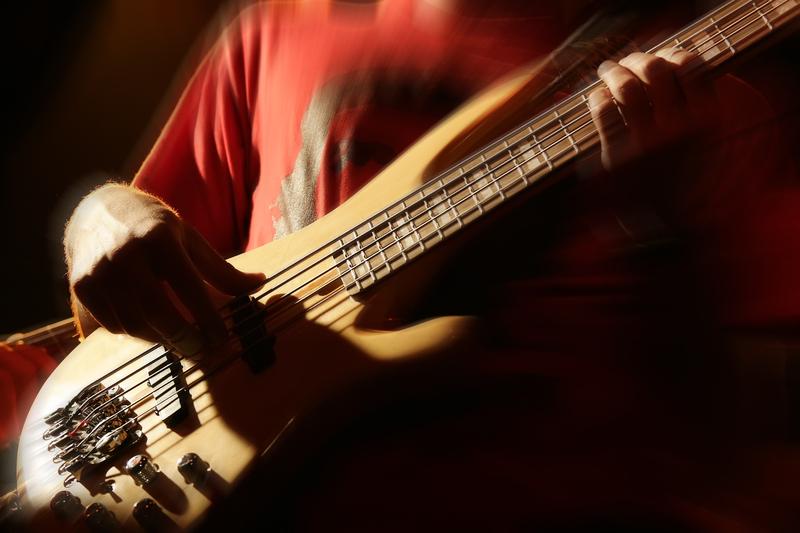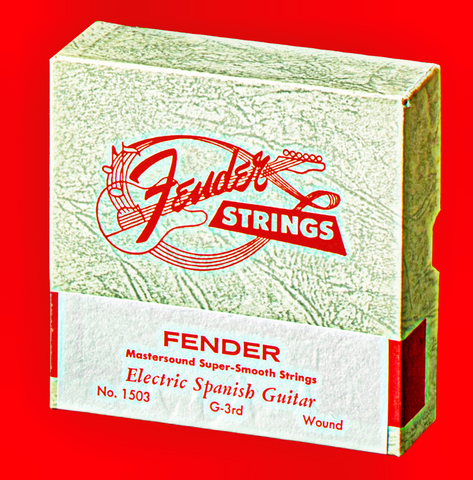Bass Guitar Notes: The Ultimate Guide for Beginners

Bass Guitar Notes: The Ultimate Guide for Beginners
Understanding bass guitar notes is critical when mastering how to play bass guitar. You must learn many things to play bass guitar—including tuning, finger techniques, reading tablature, the art of bass chords, and how to string bass guitar.
However, there’s one common trend among excellent bass players: they’re all masters of creating the perfect bass notes.
Learning to play bass guitar—although it’s easier to play than the regular guitar—takes some practice and skill. However, once you understand bass notes, you’ll create kick-ass bass lines in no time!
Let’s take a deeper look at the bass guitar and how to become a top bass guitarist:
What Are Bass Guitars?
A bass guitar is a low-pitched instrument in the guitar family. A bass guitar creates the undercurrent—known as the bassline—which brings the song together. Without a good bassline, it’s almost impossible to create an excellent melody and sound.
A bass player provides a steady beat and rhythmic feel that helps the drum flow. In addition, the bass player provides a bridge between showmanship and the guitar melody. Whenever you put your headphones in and nod your head, you’re likely bobbing your head to the bassline.
Bass guitars have a similar construction to electric guitars, but the instrument is larger and heavier. Most bass guitars have four strings, yet some bass players will use five or six-string bass guitars. Since the 1950s, the bass guitar has become essential to many musical genres—especially rock and roll. Bands like Led Zeppelin and the Red Hot Chili Peppers wouldn’t sound the same without their excellent bass lines.
And although the bass guitar doesn’t achieve the same recognition as the guitar, there are many high-profile bass players. These include Paul McCartney, Ronnie Wood, Alex James, Duff Mckagan, John Paul Jones, Jack Bruce, and Les Claypool.

Why You Should Learn To Play the Electric Bass Guitar
When you think of learning a stringed instrument, you most likely think about learning the electric guitar (which is understandable). After all, the guitar has played a more prominent role in many songs—such as Sweet Child O’ Mine, Purple Haze, and Whole Lotta Love. You’ve also probably heard more about famous guitarists like Jimmy Page, Slash, Jimmy Hendrix, George Harrison, and Eric Clapton.
With that said, the bass guitar is less common and easier to learn. And, quite importantly, fewer people are learning to play bass guitar, which gives you a higher chance of rising to the top. The bass also plays an incredible role in building a song; it’s the instrument that binds the music together, despite rarely taking credit. If you have a creative mind, the electric bass guitar will provide immense satisfaction.
Better still, the bass guitar isn’t complicated to learn. Yes, mastering bass to the same level as the legends requires extreme dedication, but you can learn to play your favourite bass lines—with the right guidance—in no time.
If you can already play the guitar, making the transition to play bass guitar won’t be overly challenging. Likewise, you can always learn to play the guitar after learning bass. Why not learn to play the double bass too? You can create some super bass lines with a double bass guitar.

A Step-By-Step Guide To Learning Bass Guitar Notes
If you don’t know what to look for when buying your first guitar, this can be a difficult experience! Your
It’s essential to master bass guitar notes when learning the bass guitar. You will not be able to master improvisation or speed playing without mastering the locations of the notes on the bass neck. Although learning the notes isn’t always the most exciting part of playing bass, it’s arguably the most important if you want to master the instrument.
If, however, you’re familiar with other musical instruments, you probably understand where the notes are on fretted instruments. The layout of the bass notes is precisely the same as the guitar, so the transition should be comfortable.
Here are some key steps to learning bass notes:
1. Begin With Open String Notes
The first step to learning bass notes is knowing the name of the four strings on your bass guitar. As you progress to more complex bass lines, this is the frame of reference that you’ll work with. Let’s begin by learning the four strings without putting your finger on the fretboard (otherwise called the open position.)
Start by strumming each string beginning with the lowest to the highest string. As you progress through the strings, say their names out loud. If you’re strumming from the lowest-pitched string to the highest-pitched string, this will be E-A-D-G.
If you’ve tuned your bass guitar like this, you’re in standard tuning unless the song should be otherwise. Most bassists will play their instruments this way. If you’re only just starting with the bass guitar, repeat this exercise twice daily from low to high and then high to low. Soon enough, you’ll know the open string notes with comfort and be ready for the next step.
2. Create a Notation Chart
For the next step, many bass guitar learners use a notation chart. If you refer to a notation chart for note locations as you play, you’ll quickly increase your playing accuracy.
Many bass players follow a vertical notation chart, whereas others follow a horizontal notation chart; it entirely depends on your preference. However, there is little difference between the two charts. The primary difference is there are four columns on a vertical notation chart and only four rows on a horizontal notation chart.
Once you’ve mastered and recognised the open string E-A-D-G sequence, move up and down the fretboard slowly and practice each fret at a time.
3. Starting Mastering All Notes
Once you have a notation chart for the notes on each fret of the bass guitar, you can start learning each note. Like all musical instruments, the bass guitar has a string of 12 notes; these are A, A#, B, C, C#, D, D#, E, F, F#, G, and G#.
An important thing to note is how you can replace #(sharp) notes with a b(flat) note of the next note. Like the guitar, the bass guitar’s notes on the scale from A to G# are a half step higher than the previous note. In addition, one fret on a bass guitar equals one step. Therefore, each time you move up a fret on the neck, you increase the note you play by a half step.
The fifth note on the bass guitar neck’s lowest string equates to the first note on the next highest string. That’s the same for all strings apart from the G string, which doesn’t follow that pattern.
As you begin playing the notes on the fretboard, you should continue reading their names out loud. Your fingers will slowly begin to remember the location of the notes as you practice in reverse sequences daily.
4. Learn and Recognize Octaves
Once you’ve learnt how to play the first twelve notes on a bass guitar, you need to practice the key concept of playing bass: how to play octaves. The first 12 notes on a bass guitar create the first octave. After the initial #G, the 12 notes will repeat themselves on a higher octave.
There are some tricks to learning how to learn octaves quickly. A popular method is to play any note on the E-string. The next instance will be two frets up on the D string and two frets down on the neck. Bass players call this the two strings + two frets rule.
You should try playing all instances of a particular note on the fretboard because all natural notes have this sequence.
Keep referring to your notation chart as you practice octaves. That will help you build your accuracy. However, ensure you start slowly and build speed gradually to master your finger technique.
5. Learn To Play Bass Scales
Learning how to play bass scales is an excellent way to practice moving your fingers quickly and precisely. A bass scale is a consecutive series of notes played in descending or ascending order.
Each scale begins and ends with the same note, which is known as the root note. The final note on each scale is also a root note. With that said, the final note’s pitch is one octave higher than the first note.
One of the simplest ways to learn bass scales is the G major scale:
- 1st note (the root note): G
- 2nd note: A
- 3rd note: B
- 4th Note: C
- 5th note: D
- 6th note: E
- 7th note: F#
- 8th note: (the root note, but one octave higher): G
What’s more, learning to play the notorious C major scale on bass guitar can help you learn many bass lines. Learning to play bass scales is the finishing touch to mastering bass notes.
Not only does playing bass scales give you finger dexterity, but it also helps you notice the same tones and notes, regardless of whether you play them on different frets. Mastering bass scales also help you spot patterns when writing basslines and music.

How To Fret Bass Guitar Strings
Learning to play notes on a bass guitar is more straightforward when you know how to properly fret your bass guitar. What’s more, having an awesome fretting hand will transform your creativity.
First, you should use your left hand’s index finger, middle finger, and pinky finger to push down the areas between the frets to create various notes. Then, hold your bass guitar neck and practice sliding your thumb up and down the neck while staying connected to the neck. That’ll enable you to use your other fingers to play with the frets.
Once your thumb is in the perfect position behind the bass guitar neck, you can bring your other fingers around the neck from the bottom. Subsequently, you can practice using your left-hand fingers to hold down specific notes on the fretboard.
Soon enough, you’ll learn that the frets closer to the headstock are wider apart. You’ll also notice the frets because closer as you slide your fingers down the fret. If you’re a beginner, look for the 3rd fret on the E-string. You’ll find these frets far easier to learn on. Then, take your index finger, put it on the E-string 3rd fret, and press it down with the fingertip.
You should then strike the E-string using a pick or your fingers—depending on your preference. You’ll notice different notes as you press down on the strings. You should alternate playing the note on your E-string third fret before releasing it to create the open E-string. You may use this exercise on other strings, but you’ll need to adjust your hand for each string as you become used to moving them around.

How To Play Bass Lines
Once you’ve learnt how to play bass notes, it’s time to create your own bass lines. In reality, learning to play your favourite bass lines or creating bass lines takes time. For thousands of bass players, an epic bass line caught their attention and made them play bass guitar.
A bass line is a series of notes played on an electric bass guitar that connects the rhythm, beat, and melody. Millions of music fans consider The Beatles the ultimate masters of creating melodies. Paul McCartney’s terrific bass lines on songs like Lucy In The Sky With Diamonds and Paperback Writer defined those songs.
Here are some simple steps to learn how to play bass lines on your bass guitar strings:
1. Find a Key
Finding the key of a song is critical for creating excellent bass lines. However, you can master this by learning bass scales and spotting the root note throughout the song.
2. Check for Timing
The bass guitar is a rhythm instrument; it helps create the tone and pace of a song. Check the tempo of a song when you’re building a bass line to match the rhythm.
3. Pick Apart The Chords
Listen to the chords of the guitarists and break them down. After a while, you can create a bass line that matches the chords in any song.

Is It Easy To Learn Bass Guitar Notes?
Although learning to play bass notes isn’t complicated, it can take some time to master. It’s possible to learn to play the bass notes quickly, but it’s better to take your time and build your technique.
Learning to play bass guitar notes is easier than learning the notes on a guitar. That’s because the bass guitar has bigger frets and wide gaps, thus allowing more room for trial and error.
So don’t let the notion of learning bass guitar notes prevent you from becoming a bass player; they’re not hard to learn. Learning bass is the same as any other instruments: it’s a process of time, patience, and proper guidance.

Learn To Play Bass Guitar Today
Your journey to becoming an incredible bass guitarist is easier when you have a bass mentor who can help you play natural notes, play chords, and how to move to an octave lower.
Fortunately, you don’t need to leave your house to learn bass guitar today. With over 38 unique lessons and 7 modules created by industry experts, an online bass guitar course is perfect learning to play bass guitar from your home.
From the blog

Rockstars in Training: The Best Kids’ Electric Guitars for 2024

Redefining Your Riffs: How Electric Guitar Strings Shape Your Sound


